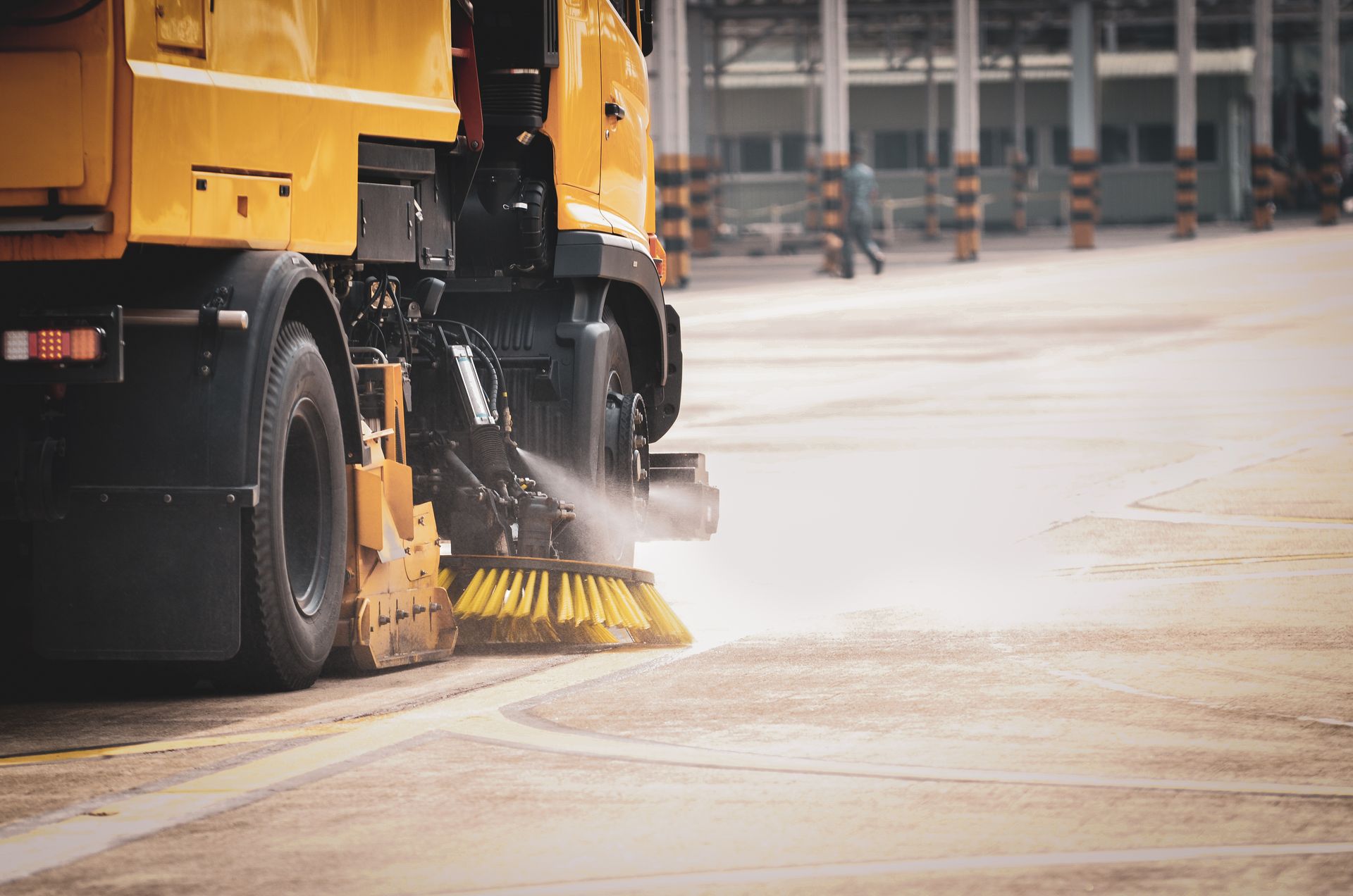Street sweeping is a versatile practice that can help maintain work zone cleanliness and protect local environments from pollution. In the construction industry, street sweeping is invaluable in stormwater management, removing harmful pollutants from worksites and preventing debris from accumulating in drainage systems.
Investing in street sweeping for your construction project can save you money by prolonging the longevity of other controls and reducing the risk of flooding. However, the question comes down to which street sweeper you should choose, as many street sweepers have different types of equipment designed for different projects.
This guide will help you choose a street sweeper so you can get the most out of your investment.
Scoping Out Project Requirements
Before diving into specific models or brands, it’s important to clarify your project’s requirements and goals. Consider the following factors:
- Scope and Size of the Project: Determine the total area that needs to be swept, including the active zone and any surrounding roadways. Compact areas will require a smaller street sweeper, which will limit your options in the long run.
- Types of Debris: Different sweepers are designed to handle different types of debris, which will impact which one is right for your job.
- Sustainability: If you are environmentally conscious, then using a street sweeper with an electric or hybrid battery could be something that’s important to you.
- Frequency of Sweeping: Determine how often you need to sweep the area. Some projects may require daily sweeping, while others may be less frequent.
- Budget: Establish a budget for the purchase or rental of the street sweeper, including maintenance costs and operational expenses. In many instances, a rental street sweeper will make more sense for most companies.
Types of Street Sweepers
Deciding on the right street sweeper depends on your application and the type of sweeper you need. Here are the most common types of street sweepers and brushes they use.
- Mechanical Broom Sweepers: These sweepers use rotating brushes to sweep debris into a hopper for collection. They are effective for removing heavy debris and are often used on construction sites and industrial areas.
- Vacuum Sweepers: Vacuum sweepers use suction to collect debris and dust into a hopper. They are efficient for cleaning urban streets, parking lots, and areas with fine particles.
- Regenerative Air Sweepers: These sweepers use a combination of air circulation and vacuum to lift debris off the ground and into a hopper. They are effective for removing fine particles and are commonly used in urban areas and around sensitive environments.
- Waterless or Dust Suppression Sweepers: These sweepers use dust suppression sprays or waterless systems to control dust and minimize water usage. They are ideal for arid regions or areas with strict water conservation regulations.
A mechanical broom sweeper will generally be recommended for commercial street sweeping that requires heavy particle removal. However, a smaller or less robust street sweeper may be adequate for municipalities’ needs.
Additional Considerations
In addition to the type of street sweeper you need, there are also many other factors you need to consider when working with a street sweeper.
- Sweeping Width and Capacity: Depending on your area’s size and the lanes a street sweeper can navigate a smaller street sweeper may be necessary to access tight spaces. Look for features such as a tight turning radius, ergonomic controls, and ease of maintenance to ensure smooth operation by operators.
- Dust Control System: Local regulations may require you to use a street sweeper that uses specific duct sizes to remove dust and other pollutants that gather on worksites.
- Noise Levels: If you’re working in a crowded or urban area, you may need to consider noise levels to avoid violating local codes.
- Emissions and Environmental Impact: Different sweepers have different sustainability standards, so inquiring about these may be important if you are trying to meet certain emissions standards.
- Maintenance Requirements: Consider the maintenance needs of the sweeper, including routine servicing, parts availability, and the availability of technical support. Reliable maintenance ensures consistent performance and extends the sweeper’s lifespan.
Choosing Between Purchase and Rental
In certain circumstances, a large enough construction company may purchase its own street sweeper. However, most companies tend to outsource this through a contractor. Here are some considerations when deciding between purchasing or renting a street sweeper.
- Purchase: Buying a street sweeper provides long-term control over equipment and may be cost-effective for ongoing projects or frequent use.
- Rental: Renting a street sweeper offers flexibility for short-term projects or one-time cleaning needs without the upfront investment and maintenance responsibilities.
Selecting the right street sweeper for your project involves careful consideration of your specific requirements, environmental regulations, budget, and operational needs. At Valor Environmental, we employ street sweepers specifically designed to work with lots of different projects, including municipalities and active work zones. For more information or to get a quote, contact us today.
FAQs
How do mechanical broom sweepers differ from regenerative air sweepers?
Mechanical broom sweepers use rotating brushes to sweep debris into a hopper, whereas regenerative air sweepers use a high-velocity air stream to lift debris off the surface and into a hopper. Mechanical broom sweepers are typically better for heavy debris, while regenerative air sweepers excel in fine dust and small debris.
What is the advantage of a vacuum sweeper?
Vacuum sweepers use suction to collect debris, making them effective for picking up fine particles and lighter debris. They are often preferred for urban areas where noise and dust suppression are important considerations.
How important is the size and capacity of the sweeper’s hopper?
The size and capacity of the sweeper’s hopper dictate how much debris it can collect before needing to be emptied. Choose a sweeper with a hopper size appropriate for the area to be cleaned and the frequency of cleaning operations to optimize efficiency.

